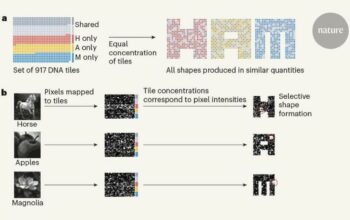The advent of laser technology has catalyzed transformative advances across various fields, most notably in the realm of medicine. In particular, the utilization of lasers to modulate cardiac functions has unveiled a new paradigm in the management of arrhythmias and other cardiovascular disorders. This article delves into the intricate ways lasers function like scalpels, wielding precision akin to that found in surgical procedures while simultaneously operating at a cellular level to influence heartbeats. By addressing the fascination with this innovative technology, we uncover both the mechanisms at play and the profound implications for future cardiac care.
The Genesis of Laser Technology in Medicine
The lasers employed in medical applications originate from the principles of quantum mechanics and light amplification. The unique wavelengths produced by lasers—often in the infrared spectrum—enable physicians to target specific tissues with remarkable accuracy. This characteristic of lasers ensures minimal damage to surrounding tissues, a decisive advantage over traditional surgical methods.
In cardiology, lasers have evolved from niche applications to central figures in surgical procedures. Heart surgery typically involves the considerable upheaval of bodily structures; however, lasers offer a non-invasive alternative that is increasingly employed in both diagnostic and therapeutic contexts. The compelled synergy of light, biology, and technology generates a riveting focal point for medical researchers.
The Heart’s Electrical Symphony
Central to the human experience is the rhythm of the heart, an organ that beats with orchestrated precision directed by its intrinsic electrical conduction system. The heartbeat operates through a finely-tuned cascade of electrical impulses that traverse a complex network of nodes and pathways. Any aberration in this electrical orchestration can result in arrhythmias—conditions characterized by irregular heartbeats that may culminate in severe health consequences.
Modern medicine has developed methods to manualize this tempo through pharmacological interventions and ablative therapies. However, the introduction of laser technology presents a novel modality that directs the use of energy in a precise manner, allowing for the modulation of these electrical impulses. The fascination with lasers as a medical instrument lies in their capability to precisely target malfunctioning cells while preserving the integrity of adjacent healthy tissues.
Laser Ablation: Redefining the Treatment Paradigm
Laser ablation, a technique that employs lasers to remove or destroy tissue, has emerged as a frontline therapy for certain types of arrhythmias. By using focused laser beams, medical professionals can effectively target myocardial regions that exhibit aberrant electrical behavior. This approach minimizes the need for extensive incisions, thus affording patients the benefits of reduced recovery times and better overall outcomes.
The application of lasers during cardiac catheterization procedures is a testament to their versatility. Utilizing catheters equipped with laser technology, cardiologists can navigate through the circulatory system to access the heart without requiring open heart surgery. As a result, patients experience decreased hospital stays and faster returns to their everyday activities, demonstrating the transformative potential embedded within laser-assisted therapies.
The Science Behind Light: Frequency and Interference
The core mechanism of lasers lies not merely in their ability to deliver incredibly concentrated light but in the specific frequency of that light. Lasers can be tailored to emit different wavelengths, enabling physicians to select the most efficacious type of laser for the targeted condition. This tunability is pivotal as different tissues absorb light at distinct rates, influencing the degree to which the laser interacts with them.
Moreover, the phenomenon of optical interference can also be harnessed in conjunction with lasers. By modulating laser frequencies and bringing them into interference with one another, clinicians can create intricate patterns of energy application that offer unprecedented control over the treatment of cardiovascular disorders. Such maneuverability enhances the effectiveness of therapies, illustrating the profound interplay between physics and biology.
Future Frontiers in Cardiac Care
The implications of laser technology extend far beyond current applications. As research continues to burgeon, the potential for lasers to treat a variety of cardiac conditions becomes more pronounced. Future explorations might include the use of lasers to regenerate cardiac tissues post-infarction or to optimize the function of artificial pacemakers. The prospect of using light to heal or modulate heart functions is both captivating and profound.
Furthermore, the intersection of artificial intelligence with laser systems may lead to the advent of autonomous or semi-autonomous cardiac interventions. Such systems could analyze real-time data from a patient’s heart and employ laser treatments instantaneously when new arrhythmic events arise. This integration of advanced technology signifies a formidable shift in the capabilities of personalized cardiac care.
Conclusion
The exploration of lasers as instruments for influencing heartbeats shines a light on the intricate relationship between technological innovation and medical science. By treating the heart with the precision of a scalpel, lasers have begun to redefine the landscape of cardiovascular therapy. Not only do they promise improved patient outcomes, but they also foster a deeper understanding of the physiological intricacies of the heart. As researchers continue to probe the implications and expand the applications of laser technology, the future of cardiac care looks profoundly illuminated.












